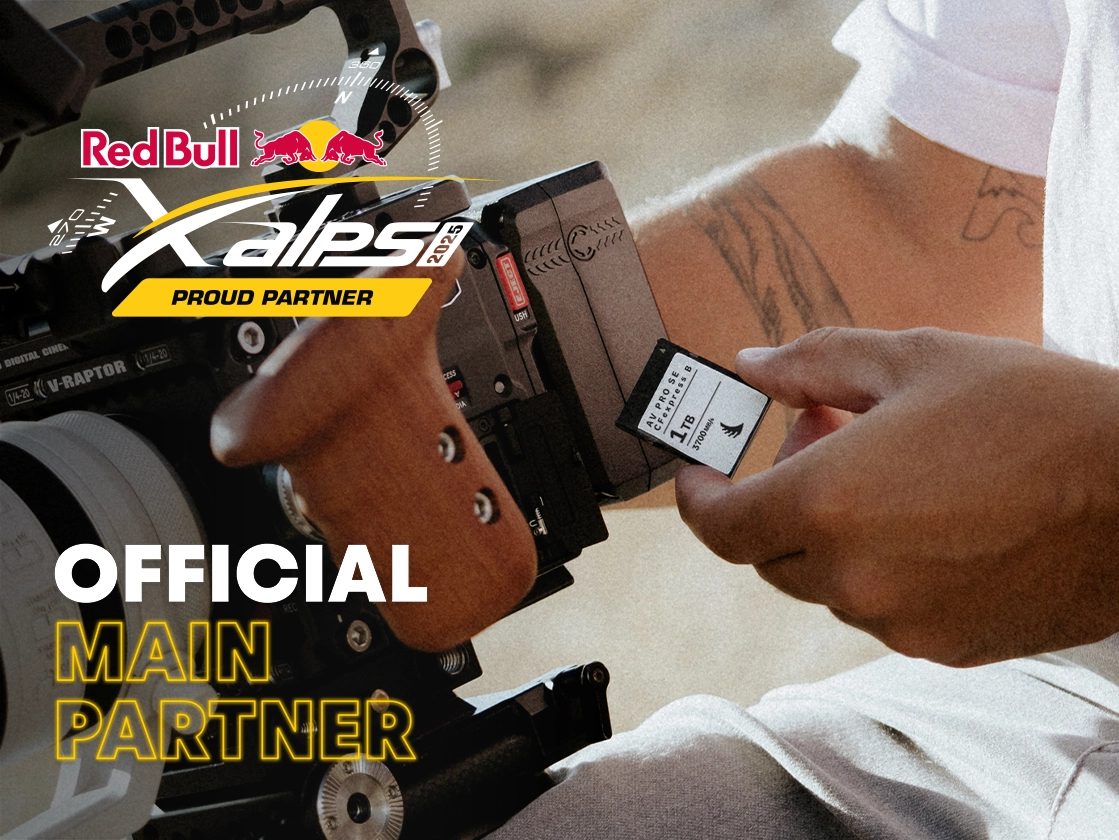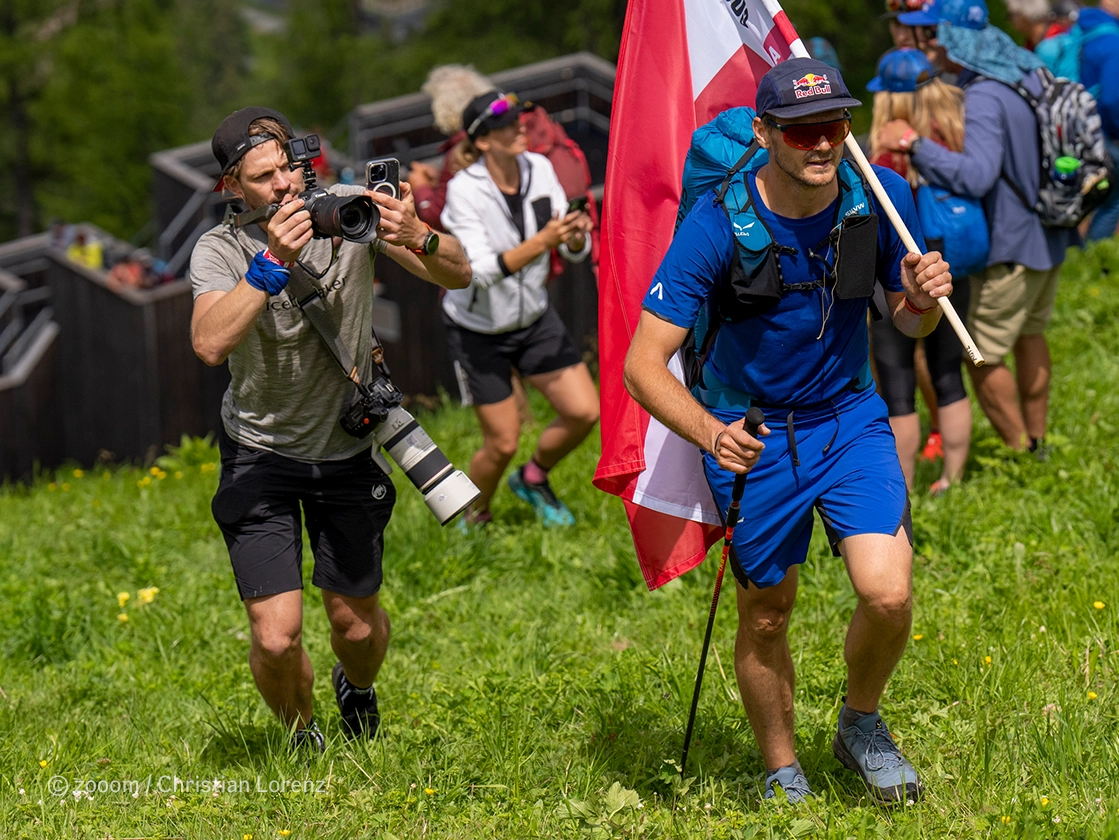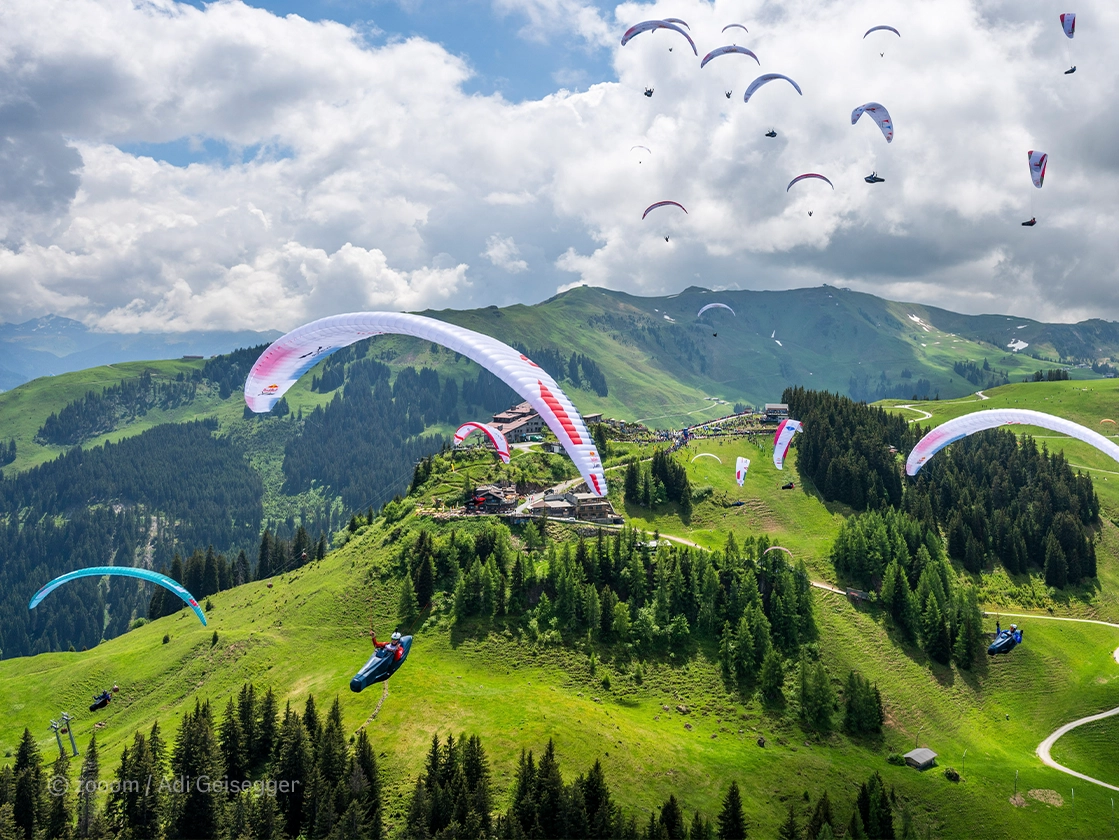The perfect shot requires vision – and good gear
In a fast-paced and unpredictable race like Red Bull X-Alps it’s almost impossible to plan the perfect shot. But that doesn’t stop the aerial photographer Adi Geisegger from trying.
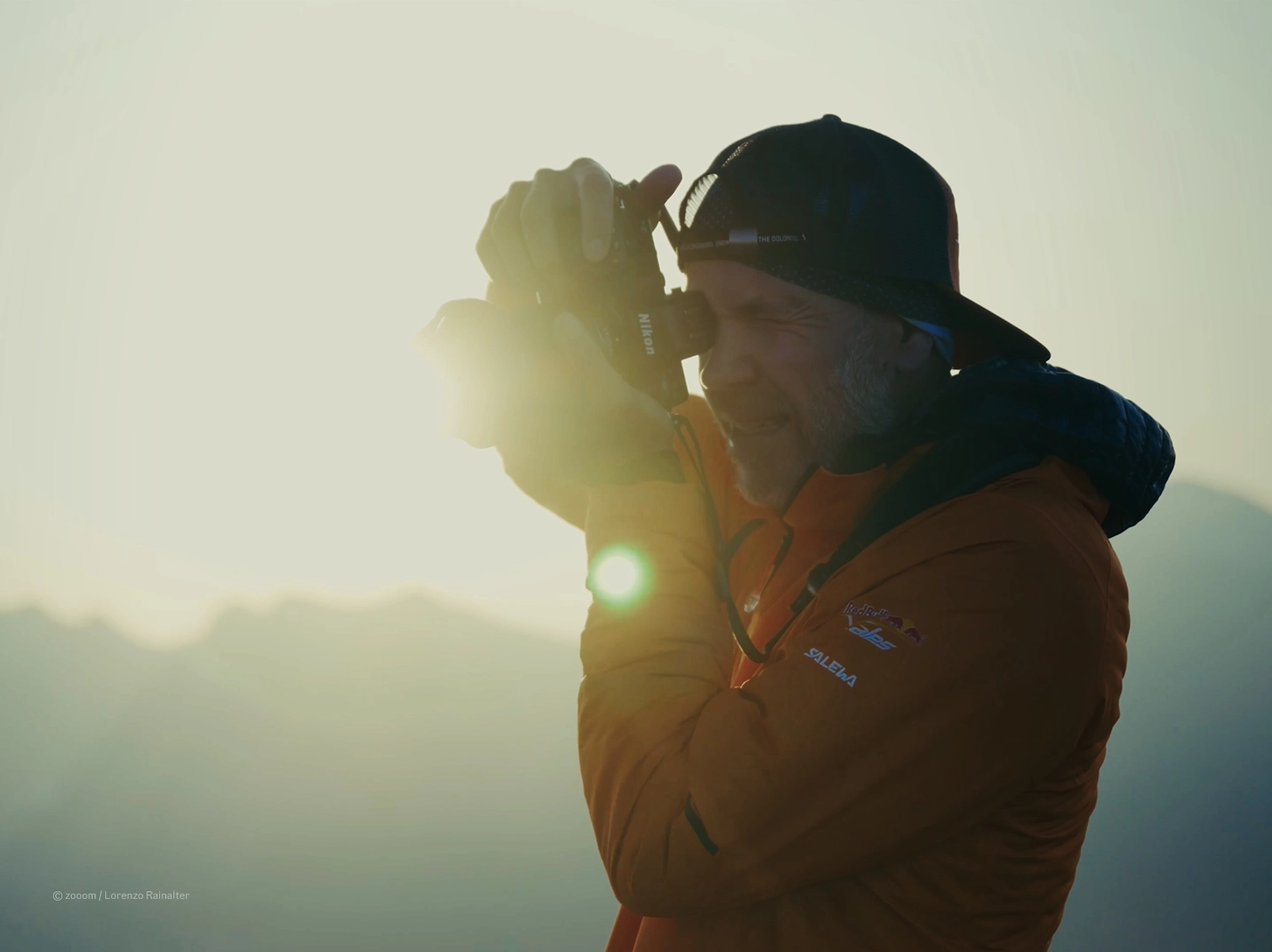
In the paragliding world Adi Geisegger’s images are well known, gracing the pages of the sport’s publications the world over. Uniquely he’s both a world class pilot as well as a top photographer – two disciplines that only a handful in the world combine. But it was the photography that came first and paragliding was the means to capture images from the air.
As a photographer he’s someone who likes to plan the perfect shot. He can spend weeks and months working on an idea – such as the nighttime shoot of paragliders illuminated by LEDs that won an award with the Red Bull Illume photo contest.
But in a fast-paced race like Red Bull X-Alps, events are normally too unpredictable to plan the perfect image. The race involves athletes hiking up mountains then launching paragliders before flying cross-county, sometimes for hours at a time over the mountains. This year the route was 1,283km long via 16 Turnpoints across five countries.
As a photographer he’s someone who likes to plan the perfect shot. He can spend weeks and months working on an idea – such as the nighttime shoot of paragliders illuminated by LEDs that won an award with the Red Bull Illume photo contest.
But in a fast-paced race like Red Bull X-Alps, events are normally too unpredictable to plan the perfect image. The race involves athletes hiking up mountains then launching paragliders before flying cross-county, sometimes for hours at a time over the mountains. This year the route was 1,283km long via 16 Turnpoints across five countries.
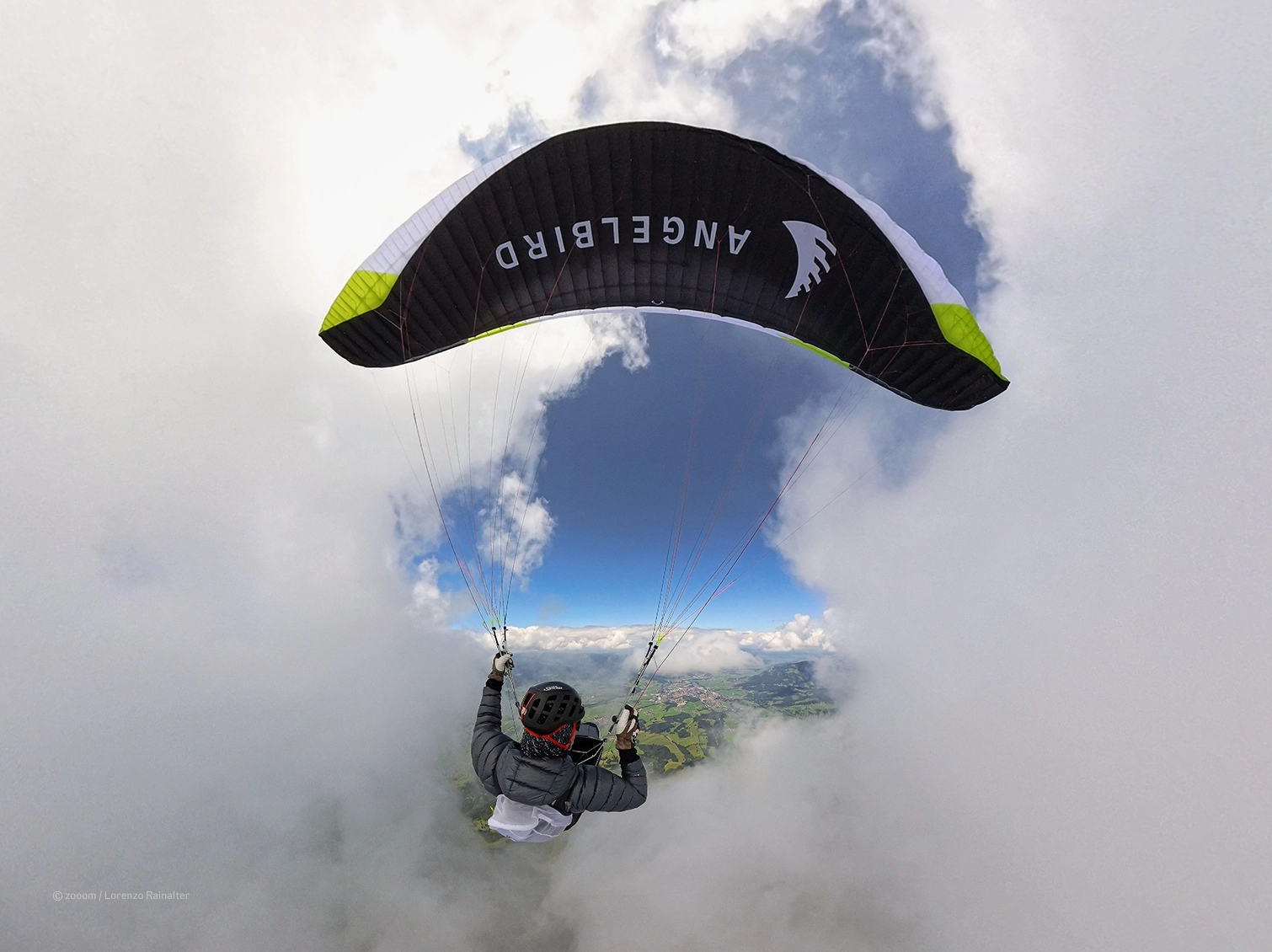
“I have to train almost like the athletes do”
Although athletes have to visit each Turnpoint, usually signing a board or taking a selfie as proof, the route in between is up to them and sometimes there can be multiple options to them. For photographers and filmers on the course, this means there is not a dead cert place to catch the action as athletes may use different hiking paths or launch from different spots depending on the wind and the conditions.
But that doesn’t stop Adi from drawing on his 30 years of photography and paragliding experience to second-guess where athletes will be. Before the race he spent hours researching the locations along the route and visualizing the images he wanted to create.
“Mentally, of course, I have a lot of images in my mind. So I check the route, check the possibilities where I could get really nice shots. And if I see the images clear in my mind, then normally I know I will get them.”
But that doesn’t stop Adi from drawing on his 30 years of photography and paragliding experience to second-guess where athletes will be. Before the race he spent hours researching the locations along the route and visualizing the images he wanted to create.
“Mentally, of course, I have a lot of images in my mind. So I check the route, check the possibilities where I could get really nice shots. And if I see the images clear in my mind, then normally I know I will get them.”
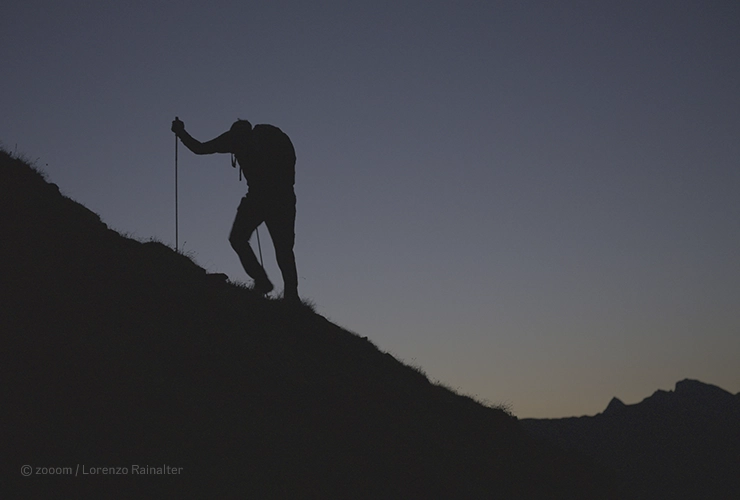
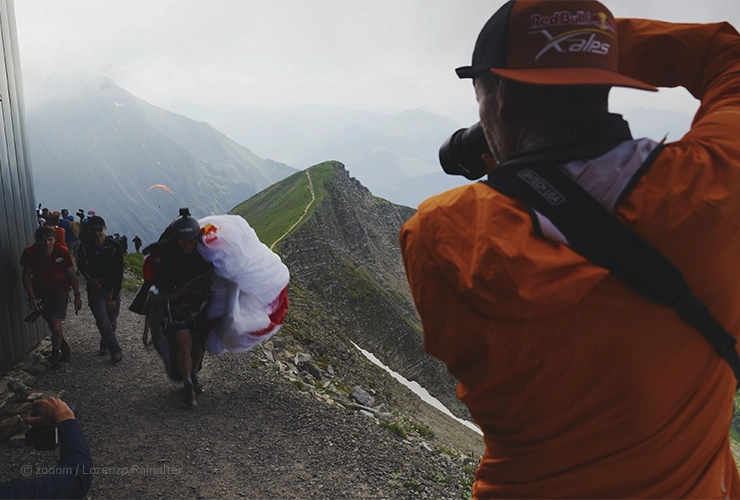
He adds that this approach requires two things – fitness and good gear. "I have to train almost like the athletes do," he says. "I hike, fly, and race alongside them, carrying my gear and creating a lot of content in very tough conditions. It’s a very hard race, and the athletes aren’t going to wait for you. Sometimes I follow them, and sometimes I stay around the most beautiful landmarks and wait for them.”
And sometimes both. In the 2023 race Adi waited patiently in the heart of the Dolomites for the leading athlete Chrigel Maurer to come through. He was in position near the towering spires of Tre Cime when Maurer appeared. But the speed of Maurer took everyone by surprise – he was running up the mountain. Adi was forced to dig deep to keep up with him to the summit to get the all-important shot.
And sometimes both. In the 2023 race Adi waited patiently in the heart of the Dolomites for the leading athlete Chrigel Maurer to come through. He was in position near the towering spires of Tre Cime when Maurer appeared. But the speed of Maurer took everyone by surprise – he was running up the mountain. Adi was forced to dig deep to keep up with him to the summit to get the all-important shot.

“The reliability and durability is very important especially in such high mountains where the environment is really tough”
The other part is making sure all his gear is ready. “To prepare and to be in focus – something I’ve done for 30 years – is check all of my lenses. I check all of my cameras. Everything must have the right place so that I'm quick getting it out to be ready and as fast as the athletes.”
Afterwards, Adi tries to find somewhere quiet to backup – even if it’s just a solitary rock to sit on. “I really try to make it in a quiet moment,” he says. “When you are working with data, especially with high quality images, you must be really sure that you don't format anything before it's really safe on the drives. So, even if it's outdoors, I search for that quiet moment. That’s why it's also very good if you have high-speed memory cards.”
Afterwards, Adi tries to find somewhere quiet to backup – even if it’s just a solitary rock to sit on. “I really try to make it in a quiet moment,” he says. “When you are working with data, especially with high quality images, you must be really sure that you don't format anything before it's really safe on the drives. So, even if it's outdoors, I search for that quiet moment. That’s why it's also very good if you have high-speed memory cards.”
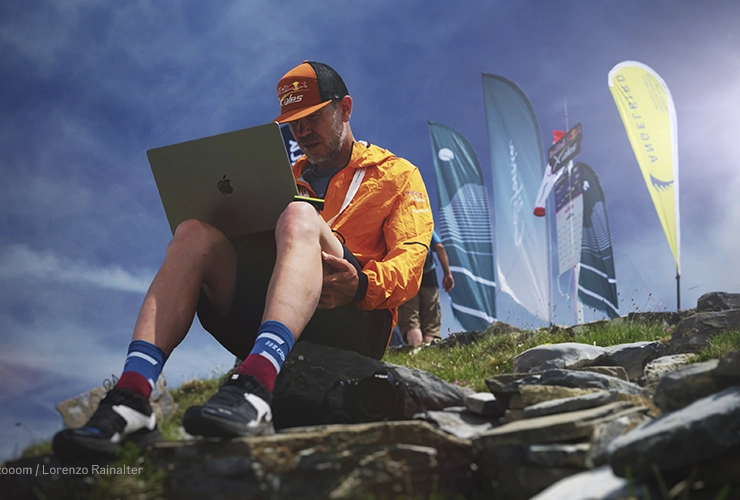
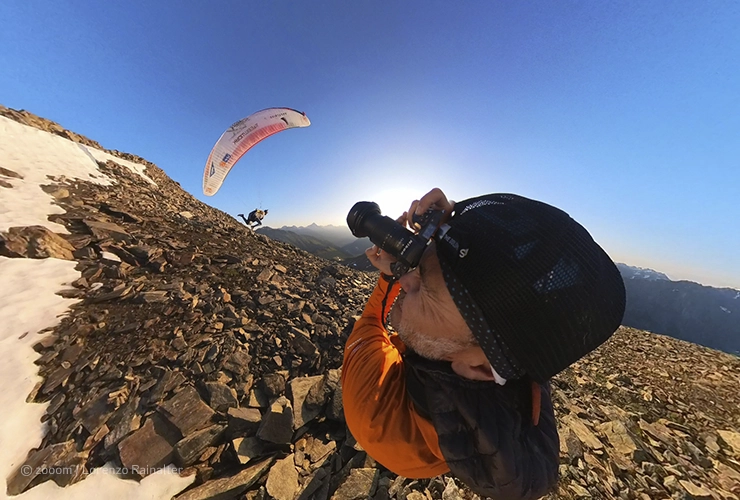
He says finding a quiet moment to transfer data after getting the shot can be a challenge in the stress of the race, but it’s essential to find. “I work remotely. I put on the main drive, I put on the safety drive and then I transfer the data directly from the camera to both drives. So I have one drive where I work through and one drive where the data can backup safely in a write-only mode.”
For Red Bull X-Alps Adi was equipped with two high-performance CFexpress™ v4 Type B memory cards, one matching Card Reader PKT, and a Media Tank™ to organize and protect up to four memory cards.
“I must have memory cards with a high capacity to be able to cover more or less the whole race on one drive and I make the backup every day,” Adi says. It also has to be “really robust”. “The reliability and durability is very important especially in such high mountains where the environment is really tough,” he says.
For Red Bull X-Alps Adi was equipped with two high-performance CFexpress™ v4 Type B memory cards, one matching Card Reader PKT, and a Media Tank™ to organize and protect up to four memory cards.
“I must have memory cards with a high capacity to be able to cover more or less the whole race on one drive and I make the backup every day,” Adi says. It also has to be “really robust”. “The reliability and durability is very important especially in such high mountains where the environment is really tough,” he says.
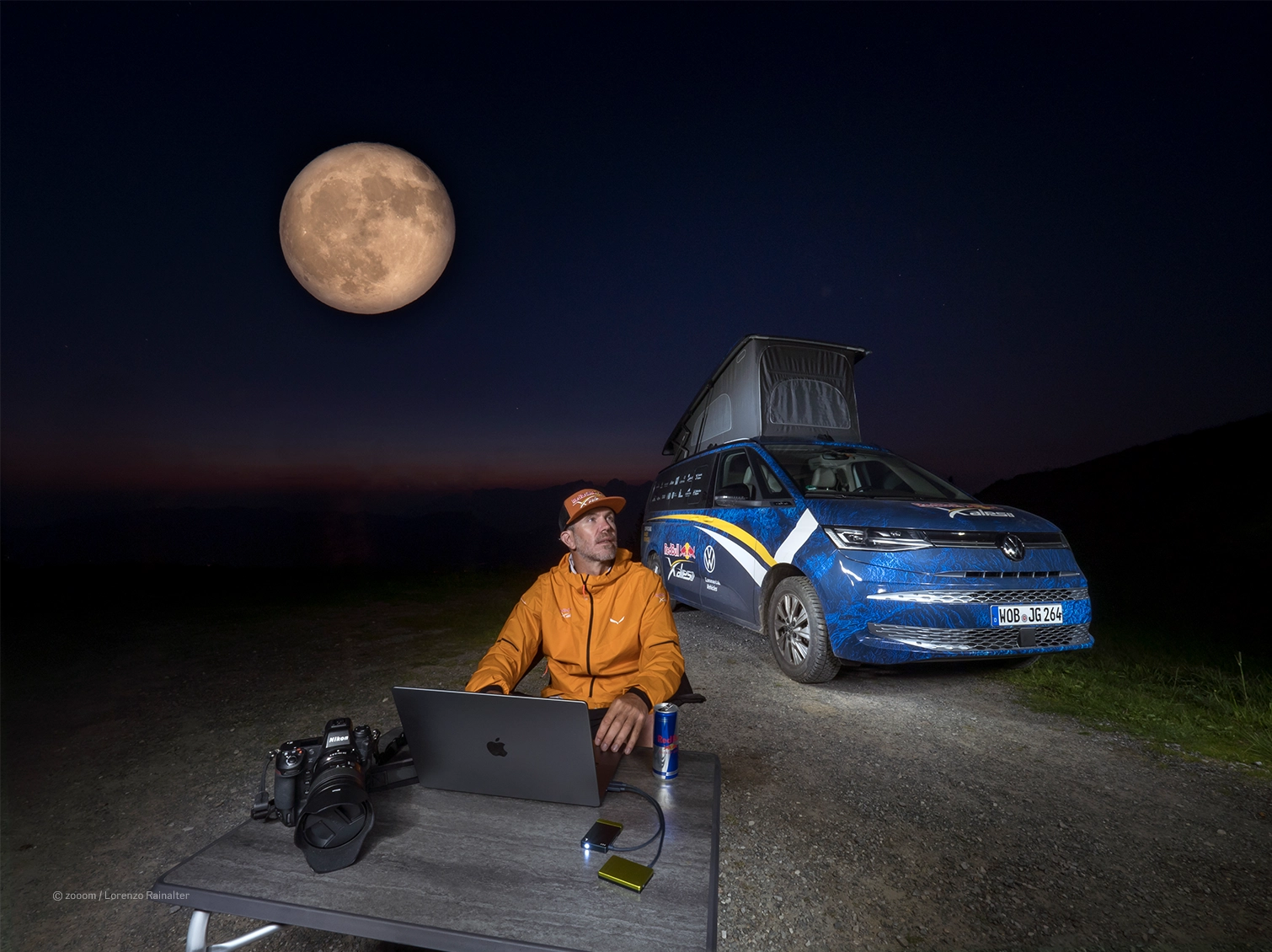
“You can’t treat it like a regular nine to five job”
His main camera is a Nikon Z8 with a 24-120mm f/4 millimeter lens. “It’s quite good for all perspectives,” he says. It’s what he uses both in the air and on the ground. As an aerial photographer, he’ll always try to get the aerial shot first. “I search for possibilities. If I'm lower than the athletes and they are climbing better than me, I look for a perspective straight in a vertical line. And if it's not flyable, I try to shoot as good as possible on the ground.”
He says the quest for the perfect shot is an all-encompassing passion. You can’t treat it like a regular nine to five job, he says. “You have to live it. Photography is my life.”
He says the quest for the perfect shot is an all-encompassing passion. You can’t treat it like a regular nine to five job, he says. “You have to live it. Photography is my life.”
Discover Adi’s Pro Creator Bundle
This Pro Creator Bundle is inspired by Adi’s personal gear set up used during Red Bull X-Alps 2025.
Designed and engineered to meet the demands of your professional photo and video workflows, the bundle includes high-performance media cards, a card reader, and a Media Tank™ to keep your treasured cards and data secure.
Designed and engineered to meet the demands of your professional photo and video workflows, the bundle includes high-performance media cards, a card reader, and a Media Tank™ to keep your treasured cards and data secure.
By viewing this video, you agree that your data may be transmitted to YouTube and that you have read the privacy policy.
The Red Bull® Marks and the Red Bull X-Alps Logo are licensed by Red Bull GmbH, Austria.
